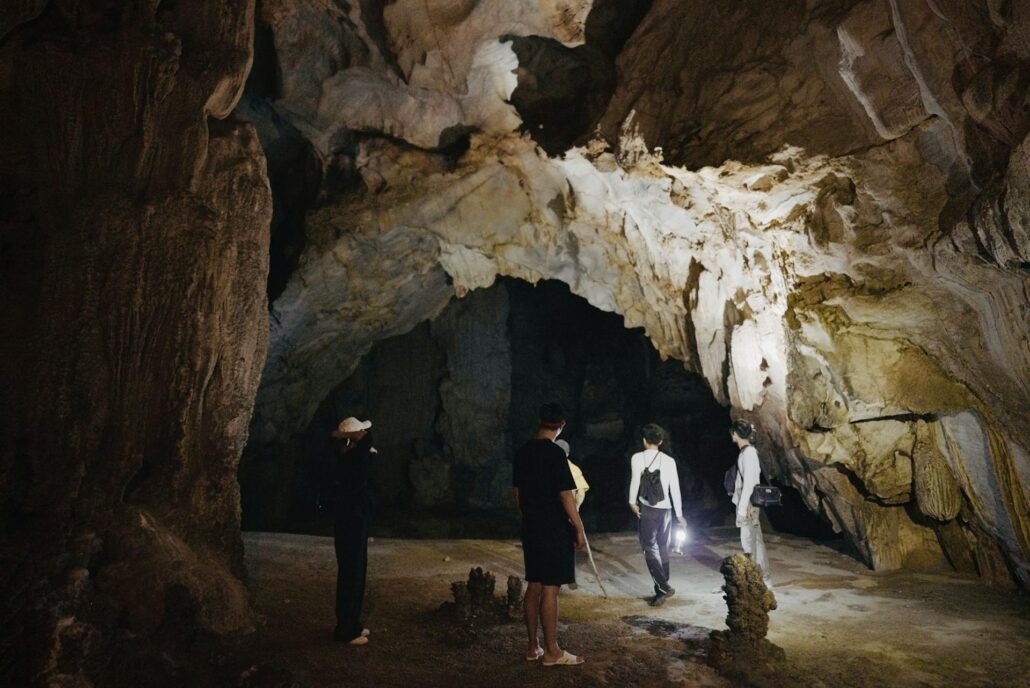Surviving the Dissertation: Tips from Someone Who Mostly Has
April 23, 2024Paisley Food and Drink Festival returns for a delicious double-helping
April 23, 2024Nestled in the heart of Paisley, Scotland, lies a site steeped in history and intrigue: Paisley Abbey, which has long been a popular Scottish tourist attraction. However, it’s not just what lies above ground that captivates visitors and historians; it’s what lies beneath – the Paisley Abbey Drain.

The story of the Paisley Abbey Drain begins with its accidental discovery in 1879 during renovation work. Workers stumbled upon a hidden underground passage, leading them to discover a feat of mediaeval engineering – a sophisticated drainage system dating back to the 14th century. This remarkable find offered a glimpse into the past, providing invaluable insights into the daily life of ancient Paisley.

Exciting Discoveries
The drain is mainly constructed of dressed stone and varies from 0.8m to 0.2m in internal width. Its different parts show that it was built in various phases, stirring interest in the detailed study of the construction sequence. Past explorations led to discoveries of fascinating features like a picture of life in animal bones, plant remains, pottery pieces, etc. There were also lead seals that implied ancient Paisley most likely participated in the cloth trade with Europe.
During the 2019 Big Dig, the Renfrewshire Council, in collaboration with Guard Archaeology Ltd, coordinated a team of archaeologists to excavate the 14th-century drain over a duration of eight weeks. They discovered that the drain ended around 3m from the present-day river banks, implying that it once flowed into the town’s River Cart. During the eight-week-long activity, the site received about 6,500 visitors, including volunteers from the Local History Forum.
Another of the most striking features of the Paisley Abbey Drain is its vaulted ceiling, adorned with elegant ribbed arches- a design characteristic of Gothic architecture. These arches serve a structural purpose and add to the grandeur of the space. As visitors venture deeper into the dimly lit passages, they are greeted by stone walls adorned with intricate carvings depicting scenes from mediaeval life.
Preserving History Amidst a Tech-Cultured Scene
Paisley Drain’s depiction through online platforms to reach wider audiences mirrors a broader trend where sectors like online entertainment are leveraging such platforms to maximise their reach. In the music industry, Spotify allows us to access a vast library of songs without visiting a physical venue or purchasing endless physical discs or records. Movie fans can now conveniently access their favourite movies or TV shows by streaming on Netflix from their couches. In other sectors like iGaming, online platforms allow players to access a variety of offerings, from classic titles to new casino games like 20p Roulette and Mini Roulette Gold. Players can also use bonuses, again without needing a physical coupon as they might once have done. The sign-up bonus, for instance, is automatically and digitally applied when a user creates an account for the first time.
And now, thanks to rapid technological advancements, the Paisley Drain can be explored virtually. Virtual tours offer the convenience that allows fans to explore a destination from any place without visiting it physically. Different platforms have previously allowed audiences to enjoy some of the fascinating secrets of the drain through 3D models. Plus, through YouTube exploratory videos, fans can get fascinating insights about the drain without worrying about reaching the physical venue.
Overall, in preserving and celebrating the Paisley Abbey Drain, we honour the achievements of the past and inspire future generations to continue learning from the rich tapestry of history surrounding us. By showcasing the lifestyle of ancient cultures dating to as early as the 14th century, the site will continue drawing the attention of history enthusiasts.

